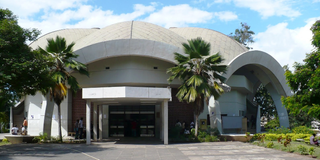Limited global exposure hinders visibility of Tanzanian research

UDSM premises
What you need to know:
- The situation has lowered Tanzanian universities’ standing in the world rankings and made it more difficult for the world to acknowledge their scholarly achievements
Dar es Salaam. The struggle of Tanzanian universities to gain international recognition has been attributed to their reliance on local journals with limited international exposure, The Citizen has learnt.
Yet, experts say visibility is paramount and a beacon guiding researchers and institutions towards recognition, collaboration, and advancement worldwide. The predicament has cast a shadow over their global rankings and hindered the recognition of their scholarly contributions on the world stage.
Consequently, the country’s universities have lagged behind, trailing their counterparts in East Africa.
For instance, the University of Dar es Salaam (UDSM), Tanzania's premier academic institution, has long been at the forefront of scholarly publication. However, its extensive scholarly output has often remained concealed within the confines of local journals. UDSM’s eight years of scholarly data show the total scholarly publications were 2,976, with an average output per year of 372; yet the publications are not visible globally.
The university’s Deputy Vice Chancellor-Research, Prof Nelson Boniface, recently told The Citizen that UDSM currently hosts a total of 24 journals covering various research areas in natural science, engineering, ICT, Kiswahili, humanities, social science, education, economics, development, business management, and law.
But the status is what worries him—the discoverability and visibility of the institution and its staff in a global context.
"We have identified this weakness. In 2021 alone, we had approximately 1,200 publications, all of which ended up in our university journals,” he said, adding, “Our efforts now are focused on ensuring that all 24 journals get mileage globally.”
Since independence, UDSM has led Tanzanian universities in scholarly publication with 10,581, followed by Sokoine University of Agriculture (SUA) with 6,169 and Muhimbili University of Health and Allied Sciences (Muhas) with 6,377, respectively, according to a global indexing database, Scopus.The fourth and fifth local universities in scholarly publications since independence are the University of Dodoma (2,394) and Ardhi University (814), respectively. Compared to their counterparts in East Africa, Makerere University leads in scholarly publications with 23,492 and Nairobi University with 22,293.
However, it is not that publishing in local journals is wrong; these journals can also be made to gain international recognition by adhering to the required criteria set for registration in the world’s best research databases. "It's not just about publishing; criteria and conditions must be adhered to. For a journal to be registered in global databases, it must meet all international criteria for publications," said education analyst Dr Emma Kaywanga. A recent breakthrough has offered a glimmer of hope amid this visibility crisis for local universities.
UDSM's College of Social Sciences (CoSS) last week celebrated a significant milestone with the indexing of its first local journal, The African Review, in the prestigious Scopus database.
The achievement marked only the second Tanzanian journal to attain such recognition since independence, signalling a potential shift towards greater global visibility for Tanzanian academia.
Indexed journals, such as those included in Scopus, experts say, are widely regarded for their quality and impact, offering enhanced visibility and credibility to both the journal and the affiliated institution.
Prof Boniface emphasised the importance of the milestone, highlighting its role in elevating the university's profile and showcasing its academic excellence across various disciplines.
"This indexing not only enhances the international visibility and discoverability of The African Review but also underscores the academic credibility of both the journal and the University of Dar es Salaam," he stated.
He acknowledged the disparity between Tanzanian universities and their East African counterparts in terms of global visibility but expressed optimism about efforts to enhance visibility through registration in reputable databases.
He said at UDSM, Makerere University, and the University of Nairobi, despite being of similar age, "our counterparts surpass us twice as much in terms of their publications and visibility globally. It's not that we don't publish; we publish a lot in our local journals that are not indexed in major global databases."
"We want to change this trend by ensuring that all our journals get registered in reputable databases to enhance our visibility,” he assured.
UDSM's commitment to improving visibility extends beyond The African Review.
CoSS Principal, Prof Christine Noe, emphasised the university's dedication to elevating other journals for indexing, viewing it as an opportunity to carry the university and country’s flag to the world through scholarly publications.
"Our college still has other journals lined up to be indexed. We have shown the UDSM community that it is possible to be international through the elevation of our local journals. This is what has happened," she said.



